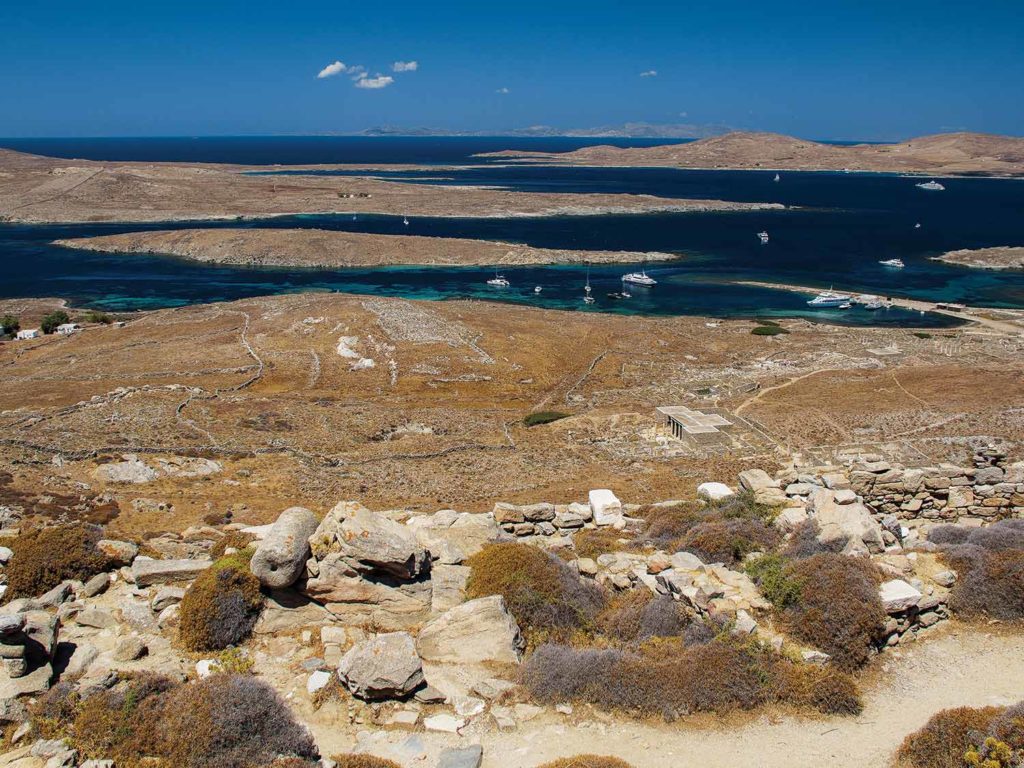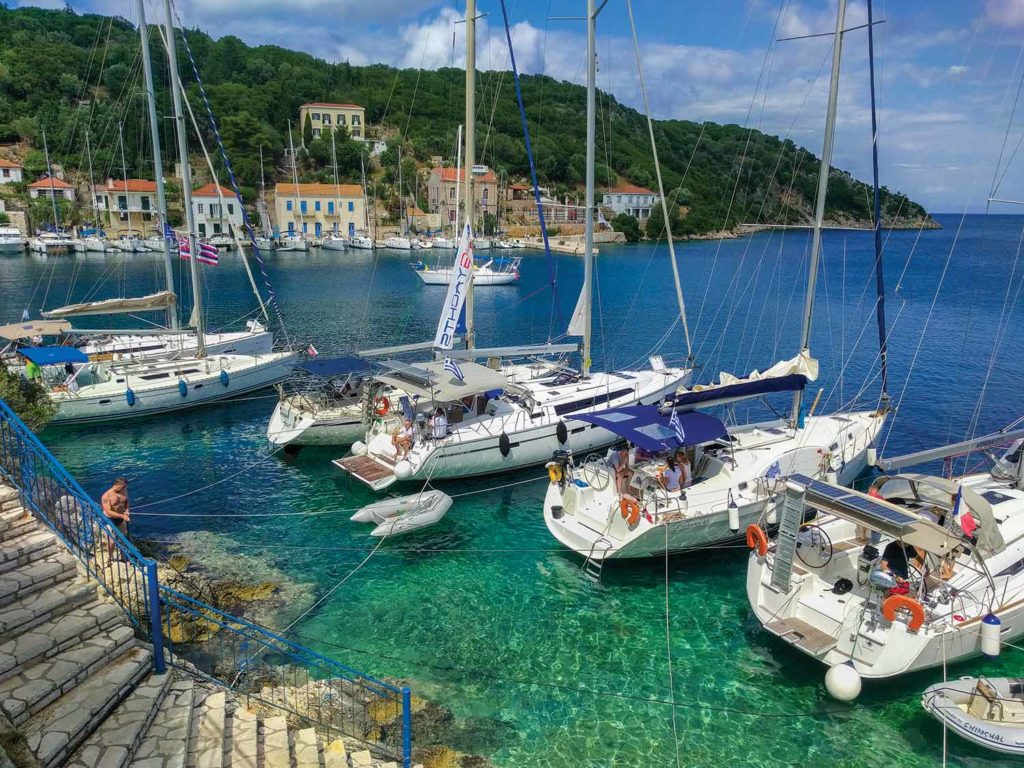
According to legend, during one of Zeus’ myriad extramarital affairs, he impregnated the Titaness Leto whose swelling from their affair caused the notice of Hera — Zeus’ wife and queen of the gods. Hera was so infuriated by her husband’s infidelity that she forbade Leto from giving birth on solid land. After being denied access at every shoreline she encountered, Leto became frantic in her search to find somewhere safe for childbearing, until at last Poseidon (at the request of Zeus) guided her ship to a floating piece of rock not yet rooted to the seabed, called Delos. There she managed to go ashore and through great effort and pain gave birth to twins, Artemis and Apollo — two of the most venerated gods from antiquity.
With such a divine claim, Delos would become one of the most pilgrimaged, important and wealthy islands in the classical world, and upon its shores a bustling and beautiful city full of temples and fueled by commerce grew into great success. Alas, fortunes change and Delos was eventually sacked and robbed by pirates and then all but abandoned for nearly two millennia before being rediscovered by archeologists in the late 19th century.
Today, no one lives on Delos. It operates as a World Heritage Site and one of the best kept open-air archaeological museums in the country. However, visitors from nearby Mykonos come by the ferry load day after day to ramble among the ancient ruins, which are undisputedly impressive. Luckily for those cruising on their own boat in the Greek islands, you can skip the ferry ride and drop your own anchor in the same harbor where ground tackle of all kinds has been laid for well over 3,000 years.
I’ve heard it said that the Aegean Sea is the most-visited cruising ground in the world, and it’s easy to see why. With over 2,000 islands to its claim, not to mention a seemingly endless and richly indented continental coastline, an entire lifetime spent in Greece is still insufficient to explore all of the country’s nooks and crannies. So if you’re like us — visitors from non-EU countries on 90-day tourist visas — then you can forget about “seeing it all.” But even three months is generous when considering that most visiting sailors can only afford to charter for a week or two. Either way, cruising Greece requires narrowing your options — “Do less, achieve more,” as my wife, Clare, would say — but that doesn’t mean missing out.

In our three months of cruising aboard Champagne, our Dufour 35, we touched 24 Greek islands, some for the briefest of nights, others for weeks of languid indulgence. Some islands provide the ideal opportunity for replacing worn boat items, while others offer little more than a delicious meal with a beautiful view. Some islands are inundated with obnoxious tourist infrastructure, while others are desolate, riddled only with idyllic coves and secluded beaches. Not only do anchorages abound, but the prevalence of public seawalls will change your perspective on cruising the Med.
RELATED: Sail the Greek Isles in Style
Although not a secret to anyone who has visited the Greek islands by boat before, we were earnestly surprised to learn that nearly every harbor offers free dockage along the town quay. Granted, this means Med-mooring against a concrete pier that scarcely offers any amenities, but the feeling of welcome and the spirit of public provision is unmistakable.
Evidence of Greece’s nautical heritage is clearly visible in every harbor: A plethora of colorful, well-kept wooden boats tug at their moorings; piles of fishing nets line the quays, either ready for service or being quietly mended by hand; iron rings are anchored into convenient rocks along busy shorelines, providing additional mooring options should the quay be full.
These are a people who have made their living from the sea far longer than anyone can accurately remember, and as such they understand her bounty and her demands. Safe harbors aren’t to be rigidly orchestrated, they’re to be openly shared. As a culture steeped in interisland travel, Greeks appreciate that the end of a difficult passage is best rewarded with a pleasant sleep, preferably after a hearty meal, while safely tied up in a secure harbor.
Historically speaking, the success of an island was linked to its ease of access, and perhaps that same rule applies today. Public seawalls aren’t just a convenience, they’re a necessary lifeline.
Consider the history of Delos: After successfully birthing her divine twins there, Leto promised great wealth to the otherwise harsh and inhospitable speck of rock by insisting that a vast number of pilgrims would flock there to worship such a sacred birthplace. And sure enough, the island found great success not because of vast natural resources or massive military might, but because it welcomed and met the needs of all who arrived by sea. Although perhaps not the birthplace of sailing, the Greek islands nevertheless serve as a worthwhile and hospitable pilgrimage site for any worshiper of wind and waves.








